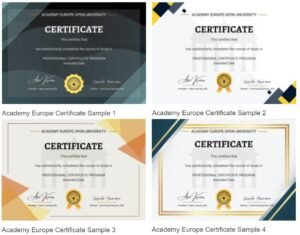Money Management Course is based on text and video learning materials by Academy Europe.
The text provides a concise overview of Earned Value Management (EVM), a project management technique used to monitor project progress and predict future performance. EVM integrates scope, schedule, and cost, objectively tracking work completion and answering stakeholder questions regarding project status. Key components include Planned Value, Actual Cost, and Earned Value, which are regularly tracked to assess past, present, and future project performance. Originally a US government financial tool, EVM has evolved into a widely adopted project management methodology. Effective EVM use, combined with good planning, helps mitigate cost and schedule overruns.
Podcast Link: https://www.youtube.com/watch?v=I_FUNPnQs84
1. Introduction:
This briefing document provides an overview of Earned Value Management (EVM), a project management technique, as described by the provided text. The document aims to summarise the key concepts, purpose, and evolution of EVM.
2. Core Purpose and Function of EVM:
The core purpose of EVM is to provide an objective and systematic method for tracking project performance. It achieves this by:
- Tracking Project Progress: EVM is used “to track the progress and status of a project and forecast its likely future performance.” It monitors the physical accomplishment of work rather than simply tracking expenditures.
- Integration of Key Project Elements: EVM integrates the three crucial project aspects: scope, schedule, and cost.
- Stakeholder Communication: EVM provides answers to stakeholders regarding a project’s performance, offering transparency and accountability.
- Performance Analysis and Prediction: EVM is not only used to show past and current project performance but also, using statistical techniques, to “predict the future performance of the project.”
- Problem Mitigation: The text notes that “Good planning coupled with effective use of EVM will reduce a lot of issues arising out of schedule and cost overruns.” This highlights its proactive approach to project management.
3. Key Components of EVM:
EVM relies on three fundamental elements:
- Planned Value (PV): The budgeted cost of work scheduled to be accomplished.
- Actual Cost (AC): The actual cost incurred for the work completed.
- Earned Value (EV): The value of the work actually completed at a given point in time.
The source emphasizes that “All the three elements are captured on a regular basis as of a reporting date.”
4. Historical Context and Evolution:
EVM has a significant history and has evolved from a specialist tool to a mainstream project management method. Key stages in this evolution are:
- 1960s: Emerged as “a financial analysis specialty in United States Government programs.”
- Late 1980s and early 1990s: EVM transformed into “a project management methodology to be understood and used by managers and executives, not just EVM specialists.” This shift demonstrates the increased awareness of the importance of these techniques.
- Present Day: EVM has now “become an essential part of every project tracking,” solidifying its status as a core project management technique.
5. Summary and Key Takeaways:
- EVM provides an objective and integrated method for project performance tracking.
- It combines scope, schedule and cost data to give a holistic view of a project’s status.
- EVM is not just a reactive tool, but it can be used to make future predictions using statistical techniques.
- The use of EVM, along with good planning, will reduce problems arising from cost and schedule overruns.
- EVM has transitioned from a specialist area to a vital element of modern project management.
6. Conclusion:
The information from the provided text clearly establishes Earned Value Management as a crucial project management technique. By combining objective tracking of progress with performance prediction, EVM allows for better control over project costs, timelines, and overall delivery, thereby increasing the chances of project success.
Dear Students,
The text and video based courses by Academy Europe are targeted at providing the students with the most important aspects of the theoretical and methodical materials. In addition, these courses will also focus on the philosophical background for the development and use of the theoretical background and are thus to be understood as partly complementary to the material of the course notes. It is assumed and strongly suggested that the students study and become familiar with the course notes.
Digital Support Resources
All of our Higher Education textbooks are accompanied by a range of digital support resources.
Each title’s resources are carefully tailored to the specific needs of the particular course’s readers.
Examples of the kind of resources provided include:
– A password protected area for instructors with, for example, PowerPoint slides, an instructor’s solutions manual and teaching notes for case studies included in the course.
– An area for students including, for example, useful spreadsheets to accompany case studies in the course, multiple choice questions, discussion questions spreadsheets and useful weblinks.
Empower Academy Europe
Join Academy Europe social media channels on Youtube, Facebook, Linkedin, Twitter and more. Share and like them by using your social media accounts.
Facebook: https://www.facebook.com/academyeurope
Twitter: https://twitter.com/academyeurope
Youtube: https://www.youtube.com/c/academyeurope
Linkedin: https://www.linkedin.com/company/academy-europe/
Certification
Academy Europe presents high-quality formal diplomas, certificates and e-certificates which are formal proof and recognition of accredited online courses. It shows all student’s abilities to learn and achieve high results and is very useful to promote personal career including with CVs, job applications and self improvements.

Curriculum
- 7 Sections
- 9 Lessons
- 10 Weeks
- EVM - Overview1
- EVM - Basic Elements1
- EVM - Cost Variance1
- EVM - Schedule Variance1
- EVM - Miscellaneous Formula1
- EVM - Examples1
- Earned Value Management: A Study Guide3
Requirements
- Ideal candidates for the course would typically possess below:
- Discipline and attentiveness
- Ability to conduct research
- Ability to perform tasks with speed, efficiency, and accuracy
- Analytical judgment
- Patience to interpret technical/scientific data
- A willingness to learn, roll up your sleeves and work toward your dream!
- A computer, tablet or smartphone and an internet connection
- Basic computer skills
Features
- Before you start proceeding with this course on Academy Europe, we are assuming that you have a good aptitude and can think logically. You should want to try something different.
Target audiences
- This course by Academy Europe aims at imparting quality education and training to students.
- Academy Europe is dedicated to its students, their specific learning requirements, and their overall learning success.
- This course is directed toward a student-centered, independent study, asynchronous learning approach.
- After completing this course on Academy Europe, students will get self improvement and promotion in their careers.
- This course is based on at least two learning skills which are provided to the users through audio & visuals, videos, verbal presentations and articles, all of which are asynchronized with distance education approach.


